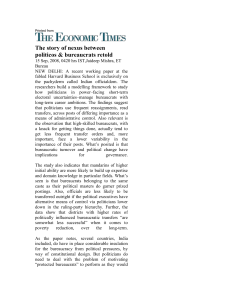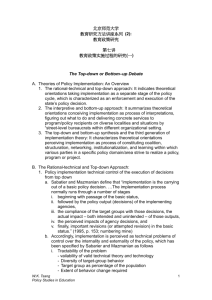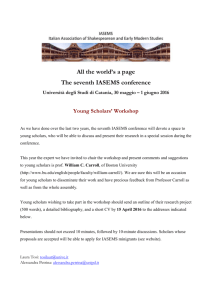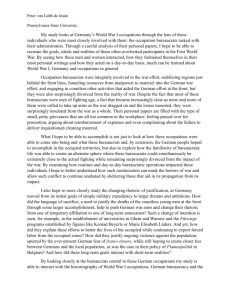Political Science Department - Department of Political Science
advertisement
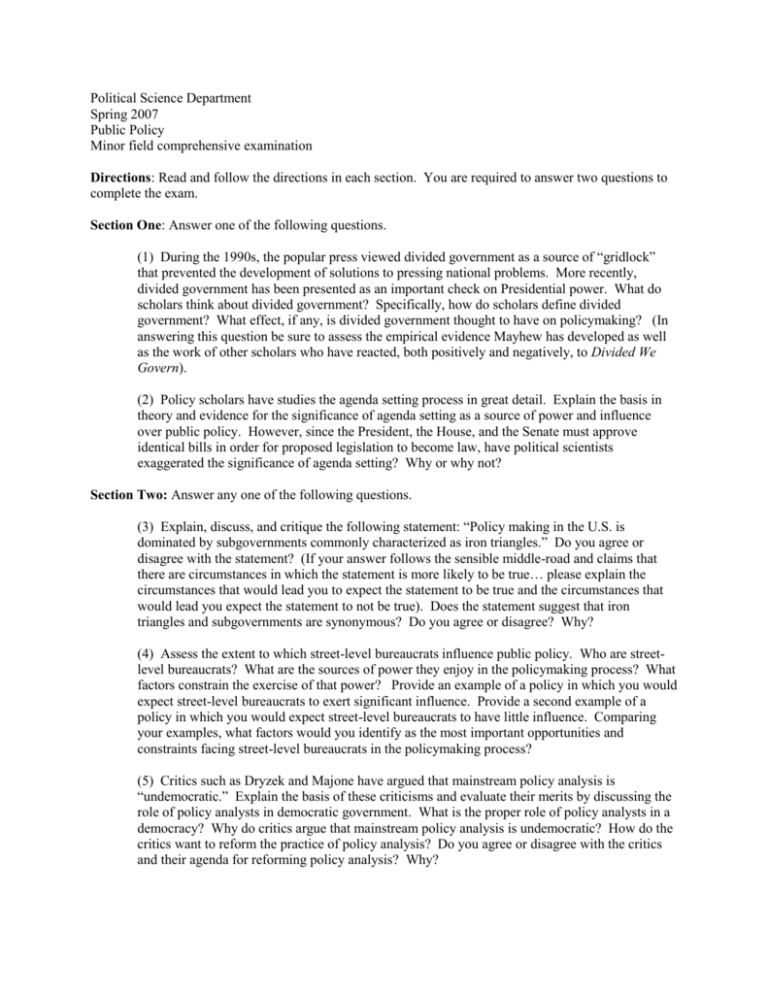
Political Science Department Spring 2007 Public Policy Minor field comprehensive examination Directions: Read and follow the directions in each section. You are required to answer two questions to complete the exam. Section One: Answer one of the following questions. (1) During the 1990s, the popular press viewed divided government as a source of “gridlock” that prevented the development of solutions to pressing national problems. More recently, divided government has been presented as an important check on Presidential power. What do scholars think about divided government? Specifically, how do scholars define divided government? What effect, if any, is divided government thought to have on policymaking? (In answering this question be sure to assess the empirical evidence Mayhew has developed as well as the work of other scholars who have reacted, both positively and negatively, to Divided We Govern). (2) Policy scholars have studies the agenda setting process in great detail. Explain the basis in theory and evidence for the significance of agenda setting as a source of power and influence over public policy. However, since the President, the House, and the Senate must approve identical bills in order for proposed legislation to become law, have political scientists exaggerated the significance of agenda setting? Why or why not? Section Two: Answer any one of the following questions. (3) Explain, discuss, and critique the following statement: “Policy making in the U.S. is dominated by subgovernments commonly characterized as iron triangles.” Do you agree or disagree with the statement? (If your answer follows the sensible middle-road and claims that there are circumstances in which the statement is more likely to be true… please explain the circumstances that would lead you to expect the statement to be true and the circumstances that would lead you expect the statement to not be true). Does the statement suggest that iron triangles and subgovernments are synonymous? Do you agree or disagree? Why? (4) Assess the extent to which street-level bureaucrats influence public policy. Who are streetlevel bureaucrats? What are the sources of power they enjoy in the policymaking process? What factors constrain the exercise of that power? Provide an example of a policy in which you would expect street-level bureaucrats to exert significant influence. Provide a second example of a policy in which you would expect street-level bureaucrats to have little influence. Comparing your examples, what factors would you identify as the most important opportunities and constraints facing street-level bureaucrats in the policymaking process? (5) Critics such as Dryzek and Majone have argued that mainstream policy analysis is “undemocratic.” Explain the basis of these criticisms and evaluate their merits by discussing the role of policy analysts in democratic government. What is the proper role of policy analysts in a democracy? Why do critics argue that mainstream policy analysis is undemocratic? How do the critics want to reform the practice of policy analysis? Do you agree or disagree with the critics and their agenda for reforming policy analysis? Why?
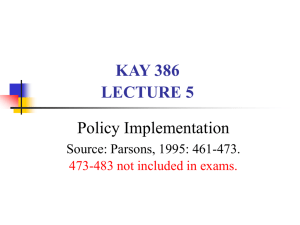
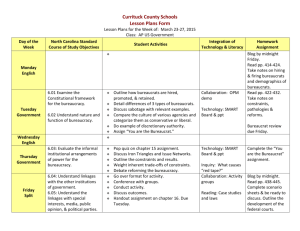

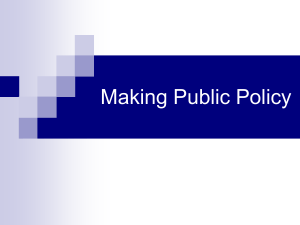
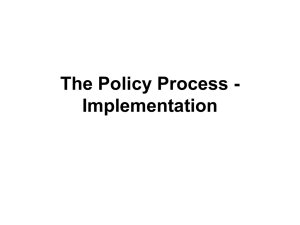
![Read_EPUB Street-Level Bureaucracy Dilemmas of the Individual in Public Service ([Read]_online)](http://s3.studylib.net/store/data/025572064_1-581d0f6d6f955d85248a62c6f7d6b3c2-300x300.png)

